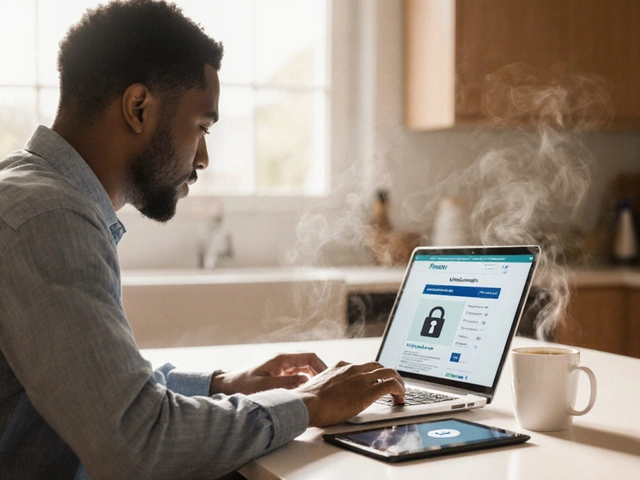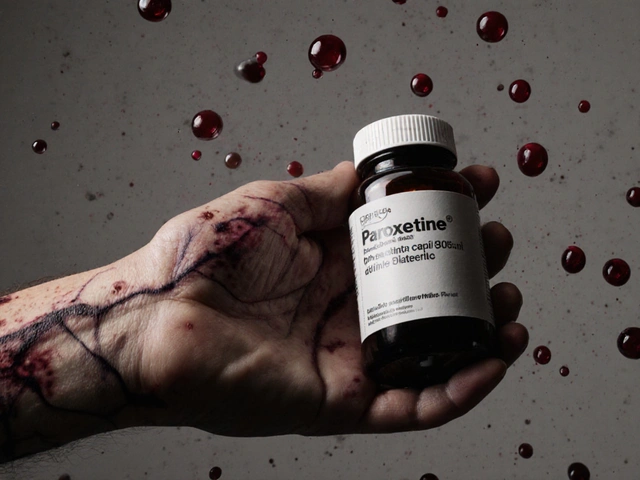Targeted therapy is a type of cancer treatment that attacks specific molecular drivers of tumor growth, sparing most normal cells. Unlike traditional chemotherapy, which bombards rapidly dividing cells indiscriminately, targeted therapy hinges on the unique genetic or protein makeup of each tumor. This precision approach has reshaped oncology practice over the past two decades, delivering higher response rates and fewer side‑effects for many patients.
Why Targeted Therapy Matters in Modern Oncology
Oncologists now diagnose cancer not just by organ or stage, but by the biomarker a measurable molecular characteristic that predicts response to a specific drug. When a biomarker such as an EGFR mutation is present, an EGFR inhibitor a drug that blocks the epidermal growth factor receptor signaling pathway can halt tumor proliferation with remarkable precision. This shift toward precision medicine the practice of tailoring treatment to individual genetic profiles has turned many once‑terminal cancers into manageable chronic conditions.
How Targeted Therapies Work: The Molecular Playbook
Every targeted agent follows a basic formula: identify a cancer‑specific driver, design a molecule that binds to that driver, and block the signal that fuels growth. The drivers fall into three broad categories:
- Mutated kinases (e.g., BRAF a serine/threonine kinase commonly mutated in melanoma)
- Overexpressed receptors (e.g., HER2 a growth‑factor receptor amplified in certain breast cancers)
- Surface antigens for immune redirection (e.g., CD19 a B‑cell marker targeted by CAR‑T cell therapies)
Small‑molecule inhibitors slip into the ATP‑binding pocket of kinases, while monoclonal antibodies sit on the extracellular domain, preventing ligand binding. The newest class, CAR‑T cell therapy a personalized immune approach where a patient’s T cells are engineered to attack a specific cancer antigen, rewires the immune system to seek and destroy tumor cells.
Key Targets and Their Approved Drugs
Below are the most clinically relevant targets and at least one FDA‑approved agent for each:
- EGFR - erlotinib, gefitinib (lung cancer)
- HER2 - trastuzumab, pertuzumab (breast & gastric cancer)
- ALK - alectinib, lorlatinib (non‑small cell lung cancer)
- PD‑1/PD‑L1 - pembrolizumab, atezolizumab (various solid tumors; represents immunotherapy but often combined with targeted agents)
- CD19 - tisagenlecleucel (CAR‑T for acute lymphoblastic leukemia)
Each drug’s efficacy hinges on accurate molecular profiling comprehensive genomic testing that identifies actionable alterations. Without this step, patients may miss life‑saving options or endure ineffective therapy.
Clinical Implementation: From Test to Treatment
When a new cancer diagnosis arrives, the standard work‑up now includes a tissue or liquid biopsy. The lab runs a next‑generation sequencing (NGS) panel covering 50‑500 genes, delivering a report that flags actionable mutations. Oncologists then consult treatment guidelines (e.g., NCCN) to match the mutation with a targeted agent. In practice, the workflow looks like this:
- Obtain tumor sample (biopsy or blood).
- Send to a certified laboratory for NGS high‑throughput sequencing that reads millions of DNA fragments simultaneously.
- Review report for actionable biomarker (e.g., EGFR exon 19 deletion).
- Select the corresponding targeted therapy (e.g., osimertinib).
- Monitor response with imaging and repeat profiling if resistance emerges.
Resistance is a real challenge-tumors can acquire secondary mutations or activate bypass pathways, prompting clinicians to switch to next‑generation inhibitors or combine therapies.

Benefits & Challenges Compared to Traditional Approaches
| Aspect | Targeted Therapy | Chemotherapy | Immunotherapy |
|---|---|---|---|
| Mechanism | Blocks specific molecular driver | Damages all rapidly dividing cells | Activates immune system to recognize cancer |
| Typical Side Effects | Skin rash, hypertension, liver enzyme elevation | Nausea, hair loss, neutropenia | Immune‑related colitis, pneumonitis |
| Response Rate (selected cancers) | 30‑70% depending on biomarker | 10‑30% overall | 15‑40% in checkpoint‑inhibitor‑responsive tumors |
| FDA‑approved Options (2024) | ~150 agents | ~20 agents | ~20 agents |
These numbers illustrate why many patients and clinicians favor targeted therapy when an actionable mutation is present-higher response, fewer systemic toxicities, and a growing toolbox of agents.
Emerging Trends Shaping the Future
The next wave will blend targeted drugs with other modalities. Early‑phase trials are testing combinations of PARP inhibitors agents that exploit DNA repair weaknesses in BRCA‑mutated tumors and immune checkpoint blockers, hoping to create synergistic tumor kill. Meanwhile, liquid‑biopsy technologies promise real‑time monitoring of resistance mutations, allowing clinicians to switch drugs before clinical progression.
Artificial intelligence is also entering the arena, scanning thousands of publications to predict which novel targets are most likely to succeed in trials. By 2027, experts expect AI‑driven target discovery to double the number of FDA‑approved agents.
Practical Takeaways for Patients and Providers
- Ask your oncologist if molecular profiling is part of your diagnostic plan.
- Know your tumor’s key biomarkers-EGFR, HER2, ALK, BRAF, KRAS are common culprits.
- Understand that targeted therapy is not a one‑size‑fits‑all; it works best when matched precisely to a genetic alteration.
- Stay informed about clinical trials; many new agents are only available within study protocols.
- Monitor side effects closely and report them; early management can keep you on therapy longer.
Frequently Asked Questions
What is the difference between targeted therapy and chemotherapy?
Chemotherapy attacks all fast‑growing cells, leading to broader toxicity. Targeted therapy zeroes in on specific molecular changes unique to cancer cells, usually resulting in higher efficacy and fewer side effects.
How do doctors decide which targeted drug to use?
Decision‑making starts with molecular profiling. The test reveals actionable mutations-if an EGFR exon 19 deletion is found, an EGFR inhibitor like osimertinib is prescribed. Guidelines from NCCN and FDA approvals guide the exact choice.
Can targeted therapy be combined with other treatments?
Yes. Many protocols pair a targeted agent with immunotherapy or chemotherapy to overcome resistance pathways. For example, HER2‑positive breast cancer may receive trastuzumab plus a taxane chemotherapy.
What are common side effects of targeted therapy?
Side effects vary by drug class but often include skin rash, diarrhea, hypertension, and liver enzyme changes. They are generally milder than chemotherapy‑induced nausea or hair loss.
How does resistance to targeted therapy develop?
Tumors can acquire secondary mutations that prevent drug binding, activate alternative signaling pathways, or increase drug efflux. When resistance emerges, a next‑generation inhibitor or a combination regimen is often needed.
Is liquid biopsy reliable for detecting mutations?
Liquid biopsies detect circulating tumor DNA and are increasingly accurate, especially for monitoring resistance. However, tissue biopsy remains the gold standard for initial comprehensive profiling.
What future advances are expected in targeted therapy?
Expect broader use of AI‑driven target discovery, more oral small‑molecule inhibitors, and integrated combos of CAR‑T, PARP inhibitors, and checkpoint blockers. By 2030, many cancers may be treatable with fully personalized regimens.






Karen Gizelle
24 September 2025 - 14:47 PM
Targeted therapy has undeniably changed the cancer landscape, but we must not overlook the hype that sometimes accompanies new treatments. While the precision approach spares many normal cells, it also creates expectations that can be unrealistic for some patients. The biographies of drugs like erlotinib or trastuzumab are impressive, yet not every tumor carries the right biomarkers. It's essential to recognise that even with a perfect match, resistance can emerge, leading to a new round of trial and error. In short, the field is promising, but we should keep a balanced perspective and not overstate the immediacy of cure.
Stephanie Watkins
25 September 2025 - 07:27 AM
The molecular profiling step is essential for personalized treatment.
Zachary Endres
26 September 2025 - 00:07 AM
Wow, reading through this makes me feel hopeful about where oncology is headed! The way targeted agents zero‑in on specific mutations feels like a sci‑fi plot come to life. I’ve seen friends benefit from HER2 inhibitors and it truly changed their prognosis. Even when resistance shows up, the pipeline of next‑generation inhibitors keeps the fight alive. It’s a roller‑coaster, but the science is moving fast, and every new trial feels like a beacon for patients. Keep sharing these breakthroughs – they inspire both clinicians and patients alike.
Ashley Stauber
26 September 2025 - 16:47 PM
All this praise for targeted therapy ignores the real cost to taxpayers. Most of these drugs are overpriced, and the benefits are marginal for many cancers.
Amy Elder
27 September 2025 - 09:27 AM
Interesting read. The data on response rates really shows why patients love these options. Side effects seem manageable compared to chemo.
Erin Devlin
28 September 2025 - 02:07 AM
Precision medicine reflects a shift from one‑size‑fits‑all to a tailored approach. It underscores the importance of genomic insight.
Raghav Narayan
28 September 2025 - 18:47 PM
When evaluating the evolution of targeted therapy, one must consider the foundational principles that have guided its development over the past two decades. Initially, the identification of driver mutations such as BRAF V600E provided a clear rationale for designing small‑molecule inhibitors that could selectively occupy the ATP‑binding pocket, thereby halting aberrant signaling. Subsequent advances in monoclonal antibody technology allowed for extracellular blockade of overexpressed receptors like HER2, which proved especially effective in HER2‑positive breast cancers. The integration of next‑generation sequencing into routine diagnostic workflows has democratized access to comprehensive genomic profiling, enabling clinicians to match patients with appropriate agents based on a 50‑gene or larger panel. A critical challenge, however, remains the inevitable emergence of resistance mechanisms, such as secondary gatekeeper mutations or activation of bypass pathways, which necessitate continual drug development. In response, third‑generation inhibitors have been engineered to retain activity against resistant alleles, exemplified by osimertinib’s efficacy in EGFR T790M‑positive lung cancer. Moreover, combination regimens that pair targeted agents with immunotherapies, like PD‑1 inhibitors, are being investigated to overcome adaptive resistance and to exploit potential synergistic effects. The advent of CAR‑T cell therapies adds another layer of precision, rewiring the patient’s immune system to seek specific surface antigens such as CD19, and has shown remarkable remission rates in certain hematologic malignancies. Nonetheless, logistical and financial barriers persist, particularly regarding the high cost of these novel therapeutics and the need for specialized manufacturing facilities. Ethical considerations also arise when discussing access equity, as patients in low‑resource settings may lack the infrastructure for comprehensive molecular testing. Looking forward, artificial intelligence promises to accelerate target discovery by mining vast datasets, potentially doubling the number of FDA‑approved agents within the next few years. In sum, while targeted therapy has transformed oncology, its continued success hinges on addressing resistance, affordability, and equitable access, all while integrating emerging technologies to refine patient‑specific treatment algorithms.
Tara Phillips
29 September 2025 - 11:27 AM
Thank you for the thorough overview; the depth of information is commendable. I encourage patients to discuss these options with their oncologists to determine suitability.
Derrick Blount
30 September 2025 - 04:07 AM
While the article admirably summarizes the current landscape, it overlooks a crucial nuance: the differential pharmacokinetics, the variability in patient adherence, the influence of comorbidities, and, importantly, the economic considerations that shape real‑world application; these factors, collectively, dictate therapeutic success beyond mere molecular matching.
Anna Graf
30 September 2025 - 20:47 PM
Great info, very helpful.